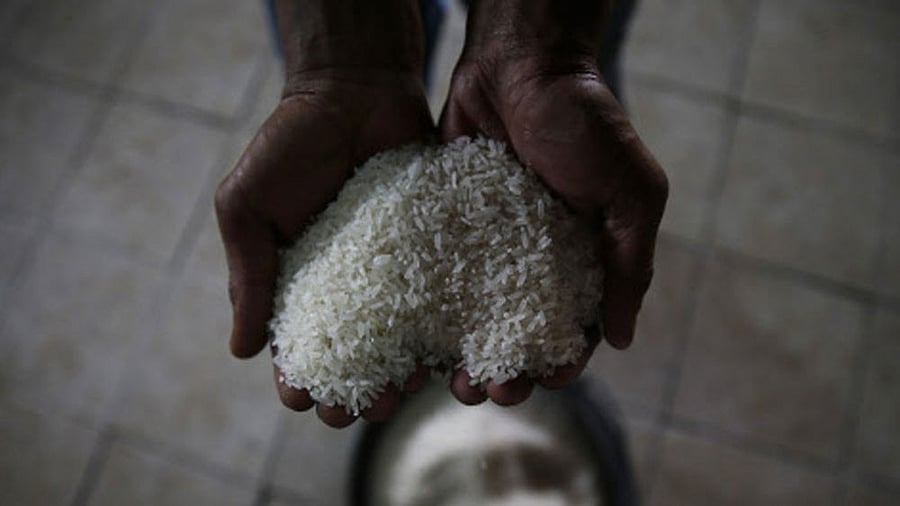
Representative image of rice.
Credit: PTI Photo
Two varieties of rice developed in the country by using genome-editing technology – DRR Dhan 100 (Kamala) and Pusa DST Rice 1 – are expected to increase yield and reduce the crop’s dependence on water. Developed by the Indian Council of Agricultural Research (ICAR), these rice strains promise yield increases of up to 30% and a reduction of water consumption by over 40%. They are also claimed to be climate-resilient and resistant to environmental degradation. The rice varieties have been pitched for other agronomic advantages as well. They require 15-20 days less to mature than conventional varieties and therefore, facilitate a quicker crop rotation. There is also the promise of higher nitrogen-use efficiency and resistance to drought and salinity. These varieties are different from genetically modified organisms (GMOs) and are classified as crops outside the GMO regulatory framework which has expedited the approvals. However, there is criticism and apprehension regarding their impact.
The two varieties address some of the concerns in Indian agriculture which is still largely dependent on the monsoon and limited underground water resources. Groundwater extraction has reached unsustainable levels in Punjab and Haryana, the two major rice-growing states in the country. The new varieties may be recommended for states such as
Uttar Pradesh, West Bengal, Odisha, and Maharashtra where productivity is low because of soil and climatic conditions.
Union Agriculture Minister Shivraj Singh Chouhan recently launched the two new varieties and announced the government’s plan to reduce the area on which paddy is sown by 5 million hectares (mha). This is because production is estimated to increase from 127.86 million tonnes to 135.84 million tonnes because of the adoption of the new varieties. The minister announced the formula of ‘minus 5 and plus 10’ which means an increase in production of 10 million tonnes even when the cultivation area is reduced by 5 mha. The plan also involves the use of the area freed of paddy cultivation for the cultivation of pulses and oilseeds, the production of which is much less than what is required. However, farmers and traders’ organisations have expressed concern over the plan because the farmers need an adequate supply of safe seeds apart from support and training in modern farming before a new variety is introduced. They have expressed the apprehension that both the rice crop and the pulses crop may suffer if adequate preparations are not in place. Seeds and farm practices cannot be introduced entirely by government diktat. Farmers’ trust, acceptance, and cooperation need to be ensured. Hasty implementation of the measures can be counter-productive.
